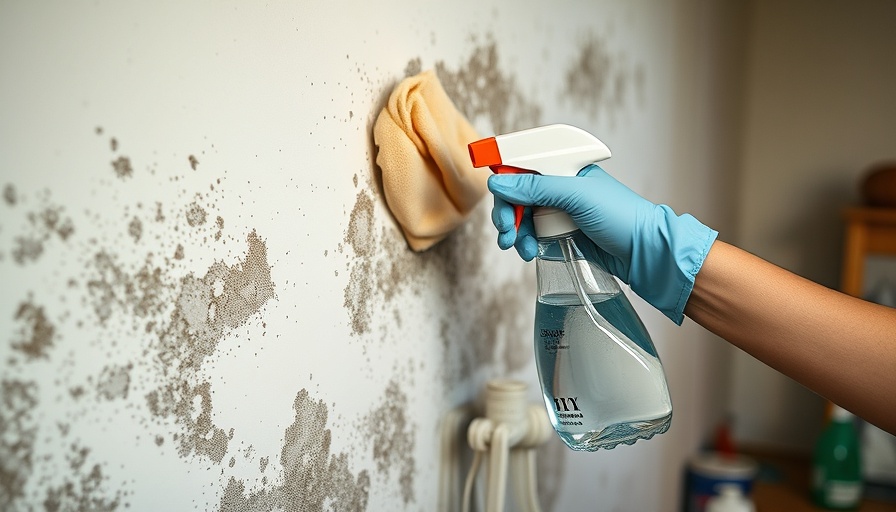
Understanding Mold Growth in Portland
Portland's distinctive, damp climate creates an ideal environment for mold growth. Homeowners and renters alike need to understand this biological phenomenon, particularly how it flourishes during the rainy season when humidity levels surge. Mold spores are ubiquitous, floating in the air, and can easily settle on surfaces that harbor moisture and organic material. This means basements, bathrooms, and other damp areas are particularly vulnerable to mold infestations.
The Health Impacts of Mold Exposure
Mold is not just a nuisance; it poses serious health risks. Studies highlight that inadequate mold control can lead to respiratory issues, allergic reactions, and other significant health problems. Individuals with asthma or other respiratory conditions may admit that mold exacerbates their symptoms, causing itchy eyes, runny noses, and more severe consequences in vulnerable populations. A hefty percentage of molds are allergenic, making them particularly troublesome in homes, and thus it’s essential for Portland residents to adopt effective mold management techniques.
Essential Supplies for DIY Mold Removal
Before launching into mold removal, gathering the right supplies is crucial. The necessary items include protective gear such as gloves, goggles, and N95 masks to safeguard against inhalation of spores. In terms of cleaning solutions, common household items like vinegar, baking soda, and hydrogen peroxide prove effective against mold. For more severe infestations, consider specialized mold removal products and always adhere to the instructions to ensure safety and effectiveness.
Your Step-by-Step Guide to DIY Mold Removal
Taking proactive steps can significantly eliminate mold issues. Begin with identifying and isolating the affected areas; switching off HVAC systems prevents spores from circulating. Scrubbing non-porous surfaces with cleaning solutions is critical. In contrast, porous materials like drywall may need removal if they are too far gone. Once cleaned, applying a mold inhibitor can prevent future growth, and regular checks for moisture are advisable to catch any recurrences early.
Maintaining a Mold-Free Environment: Important Tips
While mold removal is essential, prevention is equally crucial. Keeping indoor humidity between 30% and 50% can help inhibit mold development. Utilizing dehumidifiers and ensuring proper ventilation in moisture-prone areas like kitchens and bathrooms are practical strategies. Regularly check for leaks, and fix any water-related issues promptly to maintain a healthy home environment.
Why Professional Help May Be Necessary
In cases of extensive mold growth, the expertise of a mold remediation professional may be your best bet. They can assess the situation accurately, conduct thorough testing, and implement effective removal strategies. Professional remediation services can provide peace of mind, especially in intricate cases where mold has penetrated walls or requires extensive repairs.
Conclusion: Breathe Easy with Effective Mold Management
Mold doesn’t need to be an overwhelming challenge! By understanding Portland's unique climate, gathering the right supplies, following effective removal guidelines, and implementing ongoing prevention strategies, residents can keep their homes healthy and mold-free. For those dealing with serious infestations or seeking further assistance, many professional services are available in Portland.
If you suspect mold in your home or have health concerns related to mold exposure, don’t hesitate to act. Whether you choose to tackle the issue yourself or call in the experts, taking steps now can protect your living space—and more importantly—your health.
 Add Row
Add Row  Add
Add 




Write A Comment